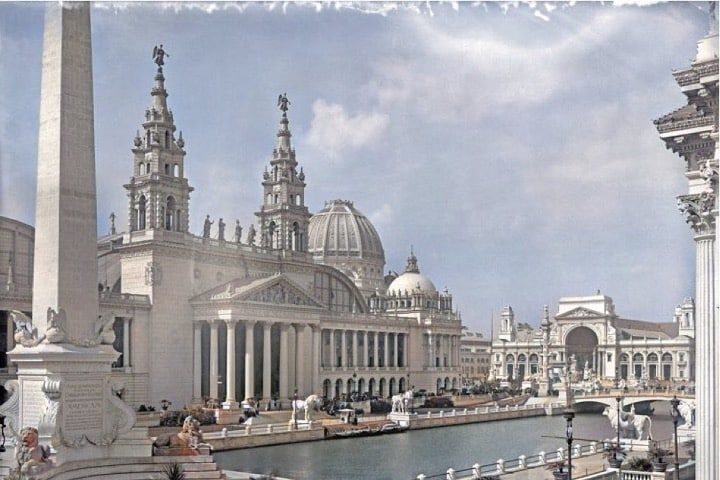
The condition of a civilization’s soul can often be gauged by the state of its cities. Clean, ornate cities garnished with beautiful art, great public works, parks, and lush landscaping are a sign of strong, moral society. On the other hand, cities plagued by filth, homelessness, crime, graffiti and rundown buildings are the outward manifestation of a society that has fallen into vice and moral decay.
If you want proof of this phenomenon, look no further than San Francisco. It’s no coincidence that a city that has politically and culturally become synonymous with godless Marxism has also become a literal garbage heap. The community’s ideology led the city into physical ruin. In turn, the sad physical shape of the city is keeping the spirit of the people in stagnation — a tragic and vicious cycle.
For it is part of the nature of humanity that we both influence and are influenced by our surroundings. We are mimetic creatures, constantly feeding off each other’s and our surroundings’ states to mold ourselves.
This is why in order to bring about the desired restoration of Christianity and true republican government, Western societies must simultaneously carry out a restoration of their communities. That means cleaning them up, cracking down on crime and homelessness, and — crucially — ushering in an architectural revival.
One of the unfortunate trends of modern architecture has been that the main factors driving it have often been economy and utilitarianism. As a result, a form of minimalism has become the dominant style — for it gives businesses seeking to build en masse the most bang for their buck.
This is not to say that there are no good-looking buildings being constructed nowadays. But they’re becoming fewer and farther between.
Whether it’s houses, apartment buildings, offices, government facilities — most of what is built just sits there. It fulfills its purpose, yes, but it doesn’t inspire, elevate, or uplift. People wouldn’t go out of their way to travel thousands of miles to see them as they do to behold the splendor of the architecture in European cities, for example, or even that of American cities built in times past.
For instance, Chicago, which has become something of a byword due to the out-of-control crime that has made the city virtually uninhabitable, was once an epicenter of culture, science, and business — one of the jewels of American civilization, home to world-class learning institutions, museums, and breathtaking architecture.
Just look at the city at the end of the 19th century:
Chicago 1899 pic.twitter.com/YdCzd5eA4Q
— Luis Miguel (@LuisMiguelUCN) June 10, 2023
At least in some parts of the West, a recognition of the importance of attractive architecture is dawning on those involved in civic life. Hungary is one such place, where a revival is taking place to revamp buildings that were made ugly under communist rule.
UPDATE: Budapest is healing. pic.twitter.com/X7KfNFJKD9
— Culture Critic (@Culture_Crit) June 7, 2023
America was supposed to be Art Deco.
— Culture Critic (@Culture_Crit) June 8, 2023
These are the 20 most iconic Art Deco buildings in the United States 🧵 pic.twitter.com/2CZaR1onCw
It should be no surprise that this trend toward the good and beautiful is taking place in a nation that has become something of a bastion against the liberal-Marxist world order. Hungarian Prime Minister Viktor Orban has gained a reputation as a champion against the globalists, with policies cracking down on mass migration and the sexualization of children by the LGBT lobby.
In antiquity, architecture (from government buildings to churches) was often beautifully made because those spearheading the construction rightly saw it as a symbol of their nation’s power and greatness. They wanted their cities to be considered the seat of civilization; they wanted their feats to be immortalized in the physical beauty of great public works. There was a pride in the construction and a deliberate effort to imbue buildings with beauty.
This can be brought back even in this modern age. While we typically think of skyscrapers as the epitome of utilitarian, minimalist building, they too can be designed with grace and elegance. There are several examples of skyscrapers in American cities that incorporate styles such as gothic and French Arts Décoratifs (Art Deco).
Beautifying cities also has the effect of making people proud of where they live and inspiring them to live better.
There’s a comedy film from 1983 called Trading Places, starring Eddie Murphy and Dan Akroyd. In the movie, two wealthy brothers have an ongoing debate about nature versus nurture. To settle the dispute, they manipulate the lives of two men. One, their well-off employee and commodities broker (Akroyd), they have framed for a crime and thrown into the streets. The other, a homeless man (Murphy), they give a job at their firm and put in a mansion.
Over the course of the film, Murphy’s character assumes the gravitas and responsibility of his new lifestyle, while Akroyd descends into slovenliness and criminality.
What the film illustrates is the real-life principle that human beings adapt to the environment around them. This is why bringing back the grandeur of the West’s architecture is not simply a nicety or a luxury, but an imperative for reviving the spirit of our civilization.




